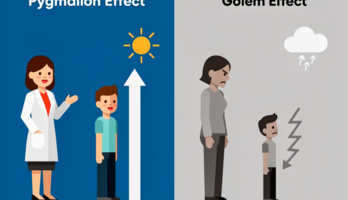John H. Lienhard IV, John H. Lienhard V. A Heat Transfer Textbook (776116), страница 92
Текст из файла (страница 92)
Whenxi is much below unity, the ideal solution approximation is usually verypoor.631632An introduction to mass transfer§11.5Figure 11.10 Typical partial and totalvapor-pressure plot for the vapor incontact with a liquid solution, illustratingthe regions of validity of Raoult’s andHenry’s laws.Example 11.5A cup of tea sits in air at 1 atm total pressure. It starts at 100◦ Cand cools toward room temperature.
What is the mass fraction ofwater vapor above the surface of the tea as a function of the surfacetemperature?Solution. We’ll approximate tea as having the properties of purewater. Raoult’s law applies almost exactly in this situation, since ithappens that the concentration of air in water is virtually nil. Thus, byeqn. (11.64), pH2 O,s = psat,H2 O (T ). We can read the saturation pressure of water for several temperatures from a steam table or fromTable A.5 on pg.
713. From the vapor pressure, pH2 O,s , we can compute the mole fraction with eqn. (11.16),xH2 O,s = pH2 O,s patm = psat,H2 O (T ) (101, 325 Pa)(11.66)The mass fraction can be calculated from eqn. (11.9), noting thatxair = 1 − xH2 O and substituting MH2 O = 18.02 kg/kmol and Mair =The equation of species conservation§11.5Mass fraction of water vapor10.80.60.40.20020406080100Temperature (C)Figure 11.11 Mass fraction of water vapor in air above liquidwater surface as a function of surface temperature (1 atm totalpressure).28.96 kg/kmolmH2 O,s =(xH2 O,s )(18.02)[(xH2 O,s )(18.02) + (1 − xH2 O,s )(28.96)](11.67)The result is plotted in Fig.
11.11. Note that the mass fraction is lessthan 10% if the surface temperature is below about 54◦ C.Gas-solid interfaces. When a solid is exposed to a gas, some amountof it will vaporize. This process is quite visible, for example, when dryice (solid CO2 ) is placed in air. For other materials and temperatures, thevaporization rate may be indetectably tiny. We call a direct solid-to-vaporphase transition sublimation.The solubility of most gases in most solids is so small that solidsare often treated as pure substances when finding their concentration inan adjacent vapor phase.
Most data for the solubility of solids into thegas phase is written in the form of the vapor pressure of the solid as afunction of surface temperature. Many such relationships are availablein the literature (see, e.g., [11.25]).633634An introduction to mass transfer§11.5Although only small amounts of gas are absorbed into most inorganicsolids, the consequences can be quite significant. Material propertiesmay be altered by absorbed gases, and, through absorption and diffusion, gases may leak through metal pressure-vessel walls.
The processof absorption may include dissociation of the gas on the solid surfaceprior to its absorption into the bulk material. For example, when molecular hydrogen gas, H2 , is absorbed into iron, it first dissociates into twohydrogen atoms, 2H. At low temperatures, the dissociation reaction maybe so slow that equilibrium conditions cannot be established betweenthe bulk metal and the gas. Solubility relationships for gases enteringsolids are thus somewhat complex, and they will not be covered here(see [11.26]).One important technical application of gas absorption into solids isthe case-hardening of low-carbon steel by a process called carburization.The steel is exposed to a hot carbon-rich gas, such as CO or CO2 , whichcauses carbon to be absorbed on the surface of the metal.
The elevatedconcentration of carbon within the surface causes carbon to diffuse inward. A typical goal is to raise the carbon mass fraction to 0.8% over adepth of about 2 mm (see Problem 11.27).Example 11.6Ice at −10◦ C is exposed to 1 atm air. What is the mass fraction ofwater vapor above the surface of the ice?Solution. To begin, we need the vapor pressure, pv , of water aboveice. A typical local curve-fit isln pv (kPa) = 21.99 − 6141 (T K)for 243 K ≤ T ≤ 273 KAt T = −10◦ C = 263.15 K this yields pv = 0.260 kPa. The remainderof the calculation follows exactly the approach of Example 11.5.xH2 O,s = 0.260/101.325 = 0.00257mH2 O,s =(0.00257)(18.02)[(0.00257)(18.02) + (1 − 0.00257)(28.96)]= 0.00160Mass transfer at low rates§11.611.6635Mass transfer at low ratesWe have seen that mass transfer processes generate flow in mixtures.When the mass transfer rates are sufficiently low, the velocities causedby mass transfer are negligible.
Thus, a stationary medium will remain atrest and a flowing fluid will have the same velocity field as if there wereno mass transfer. More generally, when the diffusing species is dilute,its total mass flux is principally carried by diffusion.In this section, we examine diffusive and convective mass transfer ofdilute species at low rates. These problems have a direct correspondenceto the heat transfer problems that we considered Chapters 1 through 8.We refer to this correspondence as the analogy between heat and masstransfer. We will focus our attention on nonreacting systems, for whichṙi = 0 in the species conservation equation.Steady mass diffusion in stationary mediaEquations (11.58) and (11.21) show that steady mass transfer withoutreactions is described by the equation + ∇ · ji = ∇ · ni = 0∇ · (ρi v)(11.68)or, in one dimension,d d dni=ρi v + ji =mi n + ji = 0dxdxdx(11.69)that is, the mass flux of species i, ni , is independent of x.When the convective mass flux of i, ρi v = mi n, is small, the transportof i is mainly by the diffusional flux, ji .
The following pair of examplesshow how this situation might arise.Example 11.7A thin slab, made of species 1, separates two volumes of gas. Onone side, the pressure of species 2 is high, and on the other it is low.Species 2 two is soluble in the slab material and thus has differentconcentrations at each inside face of the slab, as shown in Fig. 11.12.What is the mass transfer rate of species 2 through the slab if theconcentration of species 2 is low?636An introduction to mass transfer§11.6Figure 11.12 One-dimensional, steadydiffusion in a slab.Solution. The mass transfer rate through the slab satisfies eqn. (11.69)dn2=0dxIf species 2 is dilute, with m2 1, the convective transport will besmalln2 = m2 n + j2 j2With Fick’s law, we havedj2ddm2dn2=−ρD21=0dxdxdxdxIf ρD21 constant, the mass fraction satisfiesd2 m2=0dx 2Integrating and applying the boundary conditions, m2 (x = 0) = m2,0and m2 (x = L) = m2,L , we obtain the concentration distribution: m2 (x) = m2,0 + m2,L − m2,0 xLMass transfer at low rates§11.6637The mass flux is thenn2 j2 = −ρD21dm2ρD21 =−m2,L − m2,0dxL(11.70)This, in essence, is the same calculation we made in Example 2.2 inChapter 2.Example 11.8Suppose that the concentration of species 2 in the slab were not smallin the preceding example.
How would the total mass flux of species 1differ from the diffusional flux?Solution. As before, the total mass flux each species would be constant in the steady state, and if the slab material is not transferredinto the gas its mass flux is zeron1 = 0 = ρ1 v + j1Therefore, the mass-average velocity in the slab isv=−j1j2=ρ1ρ1since j1 + j2 = 0. The mass flux for species 2 isn2 = ρ2 v + j2ρ2= j2+1ρ1m21= j2+ 1 = j2m11 − m2since m1 + m2 = 1.When m2 1, the diffusional flux will approximate n2 . On theother hand, if, say, m2 = 0.5, then n2 = 2j2 ! In that case, the convective transport ρ2 v is equal to the diffusive transport j2 .In the second example, we see that the stationary material of the slabhad a diffusion velocity, j1 .
In order for the slab to remain at rest, theopposing velocity v must be present. For this reason, an induced velocityof this sort is sometimes called a counterdiffusion velocity.From these two examples, we see that steady mass diffusion is directly analogous to heat conduction only if the convective transport is638An introduction to mass transfer§11.6negligible. That can generally be ensured if the transferred species isdilute.
When the transferred species has a high concentration, nonnegligible convective transport can occur, even in a solid medium.Unsteady mass diffusion in stationary mediaSimilar conclusions apply to unsteady mass diffusion. Consider a mediumat rest through which a dilute species i diffuses. From eqn. (11.58) withri = 0,∂ρi + ji= −∇ · ρi v∂t + ji(11.71)= −∇ · mi nIf mi 1, only diffusion contributes significantly to the mass flux of i,and we may neglect mi n∂ρi≈ −∇ · ji = ∇ · (ρDim ∇mi )∂tWith small mi , the density ρ and the diffusion coefficient Dim will notvary much, and we can factor ρ through the equation∂mi= Dim ∇2 mi(11.72)∂tThis is called the mass diffusion equation.
It has the same form as theequation of heat conduction. Solutions for the unsteady diffusion of adilute species in a stationary medium are thus entirely analogous to thosefor heat conduction when the boundary conditions are the same.Example 11.9A semi-infinite stationary medium (medium 1) has an initially uniformconcentration, mi,0 of species i.
From time t = 0 onward, we place theend plane at x = 0 in contact with a second medium (medium 2) witha concentration mi,s . What is the resulting distribution of species inmedium 1 if species 1 remains dilute?Solution. Once mi,s and the solubility data are known, the massfraction just inside the solid surface, mi,u , can be determined (seeFig. 11.13). This concentration provides the boundary condition atx = 0 for t > 0.
















